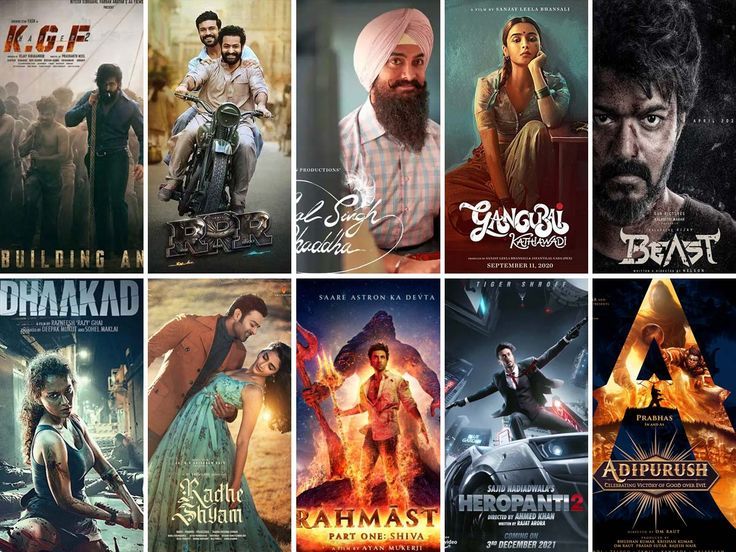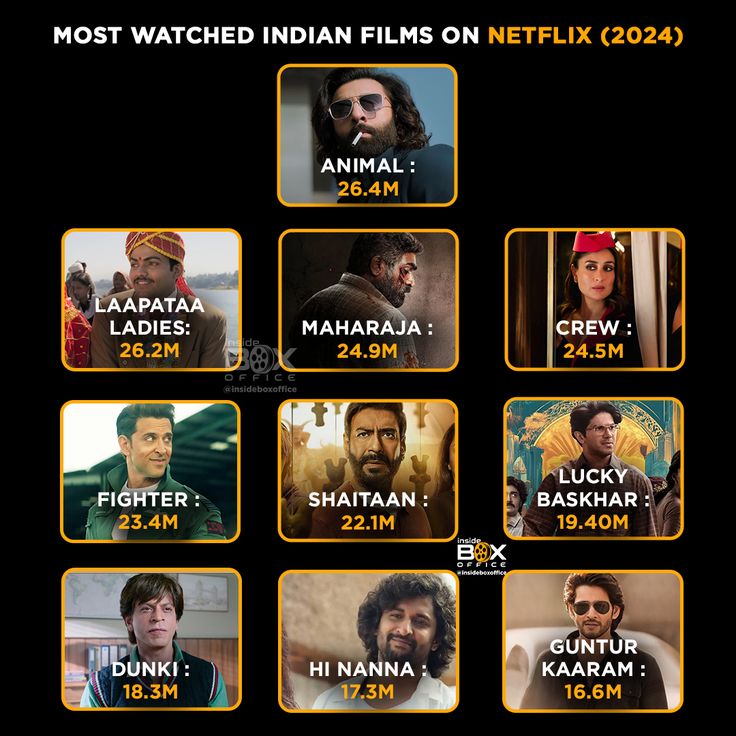Table of Contents
Over the past decade, streaming platforms have completely revolutionized the entertainment industry, with Netflix emerging as a dominant force in global media. Netflix’s original content, produced for international audiences, has had a profound impact on local film industries, especially in countries like India. As one of the largest and most diverse film markets in the world, India’s film industry—traditionally dominated by Bollywood—has experienced significant shifts due to the rise of Netflix Originals. From introducing new genres to fostering cross-cultural storytelling, Netflix has influenced local production styles, formats, and storytelling techniques, contributing to the evolution of India’s cinematic landscape.

The Emergence of New Genres in Indian Cinema
Before the rise of streaming platforms, Indian cinema was largely defined by its traditional genres such as romantic dramas, action thrillers, and family-centric films, with Bollywood as the central hub of production. However, Netflix Originals have played a key role in diversifying the genres that are now popular in India.
One of the most notable influences of Netflix has been the crime drama genre, which has found a significant audience in India. Shows like Sacred Games (2018), a gritty, neo-noir thriller set in Mumbai, marked a departure from traditional Bollywood fare. Its success was not only a testament to its high-quality production values but also to the changing tastes of Indian viewers who are increasingly drawn to dark, suspenseful narratives that tackle real-world issues like corruption, power, and societal inequality.
Similarly, Netflix has introduced historical dramas and biographical series, such as Taj Mahal and The White Tiger, that explore untold stories or lesser-known historical events, a significant shift from the typical Bollywood historical epics. These shows have inspired Indian filmmakers to take more creative risks and explore unconventional subjects, breaking away from the familiar formulaic storytelling.

Cross-Cultural Storytelling: Bridging Global Audiences
One of the most significant contributions of Netflix Originals to India’s film industry is the rise of cross-cultural storytelling. Netflix has made it possible for Indian filmmakers and storytellers to reach global audiences, while also incorporating themes, ideas, and formats that resonate with people from diverse cultural backgrounds. This has encouraged filmmakers to produce content that blends global perspectives with local stories, making Indian films and series more internationally relevant.
Sacred Games, again, serves as a prime example of this. The series, which was based on the 2006 novel by Vikram Chandra, brought together Indian mythology, modern-day crime, and global socio-political issues, creating a unique narrative that resonated with audiences both in India and abroad. The series’ global appeal showcased the potential of Indian storytelling in the international market, while Netflix provided a platform for Indian filmmakers to experiment with innovative formats and storylines.
Shows like Delhi Crime (2019), which won the International Emmy Award for Best Drama Series, further cemented this trend. Based on real-life events—the 2012 Delhi gang rape case—this series was produced with a raw, documentary-style approach that portrayed a sensitive and controversial issue in a way that was both accessible to global audiences and deeply rooted in the Indian context.

Influence on Local Production Styles and Formats
The impact of Netflix Originals on Indian cinema extends beyond just content and storytelling. The platform has had a direct influence on local production styles and formats. Indian filmmakers have begun to adopt techniques commonly used in international television and cinema, creating a shift from traditional Bollywood filmmaking.
For instance, the pacing, cinematography, and production quality of Netflix Originals are often in line with global standards, setting a higher benchmark for Indian productions. The level of attention given to detail, character development, and plot complexity in shows like Mirzapur (2018) and The Family Man (2019) is a marked departure from the more straightforward narratives typically seen in mainstream Bollywood films.
In addition, Netflix has helped introduce limited series and anthology formats to India, diversifying the way stories are told. Indian filmmakers, inspired by these formats, are increasingly exploring projects that don’t necessarily require a feature-length runtime. These formats allow for deeper exploration of characters and themes in a more concise and focused manner, allowing creative freedom that is often restricted in traditional film production.
The use of multi-season arcs has also grown in popularity, with Indian web series and shows now following in the footsteps of international models like Stranger Things or The Crown. By doing so, Netflix has effectively introduced a new way of storytelling that is episodic and far less reliant on the three-act structure that dominates Bollywood.

The Democratization of Indian Cinema
One of the most transformative impacts of Netflix Originals has been on the democratization of Indian cinema. Traditionally, Bollywood has been dominated by a small group of big-budget producers, directors, and actors. However, the rise of streaming platforms like Netflix has opened doors for lesser-known filmmakers and actors, particularly those from independent cinema or regional industries.
Netflix has provided a platform for regional filmmakers to showcase their work to a global audience. Tamil, Telugu, and Bengali filmmakers have found new opportunities to distribute their films worldwide, which were previously limited to a smaller, niche audience. Shows like Leila (2019), which addresses dystopian political themes, and Sacred Games, which features a combination of Hindi and English, have helped elevate regional content to the international stage.
This democratization of Indian cinema is also reflected in the increasing recognition of diverse voices in the industry. Netflix has enabled a more inclusive platform for marginalized communities, allowing content that reflects gender, caste, and social issues to be widely seen. Films like Period. End of Sentence. (2018), which discusses menstrual hygiene in rural India, have sparked global conversations and increased awareness of social issues that were once overlooked in mainstream media.

Challenges and Criticisms
Despite the positive impacts, the rise of Netflix Originals has not been without its criticisms. Some argue that the growing influence of global streaming platforms is threatening the traditional Bollywood film industry, which is seen as being more commercial and mass-market. Critics have voiced concerns over the dominance of international content, which may overshadow locally produced films.
Additionally, the shift towards more mature and controversial content in Netflix Originals has also sparked debate. Some believe that the platform’s darker, more complex storylines might not always align with India’s traditional family-oriented values, while others argue that it is necessary to explore more realistic and nuanced portrayals of Indian society.

Conclusion
The global influence of Netflix Originals on India’s film industry cannot be overstated. From introducing new genres and enhancing the production quality of Indian films to encouraging cross-cultural storytelling and empowering regional filmmakers, Netflix has played a crucial role in shaping the future of Indian cinema. The streaming platform has provided Indian filmmakers with a platform to showcase their talent on a global stage, creating a new era of storytelling in the process.

While challenges exist, the overall impact of Netflix Originals on India’s film industry has been overwhelmingly positive, and it is likely that this influence will continue to grow in the coming years. As more diverse and international content becomes accessible to Indian viewers, it will only serve to further broaden the scope and depth of Indian cinema, making it an exciting time for filmmakers and audiences alike.
Author Profile
- Syed Tahir Abbas is a Master's student at Southwest University, Chongqing, specializing in international relations and sustainable development. His research focuses on U.S.-China diplomacy, global geopolitics, and the role of education in shaping international policies. Syed has contributed to academic discussions on political dynamics, economic growth, and sustainable energy, aiming to offer fresh insights into global affairs.
Latest entries
 Japanese PoliticsSeptember 6, 2025Prince Hisahito’s Coming-of-Age and Japan’s Male-Only Succession Dilemma
Japanese PoliticsSeptember 6, 2025Prince Hisahito’s Coming-of-Age and Japan’s Male-Only Succession Dilemma GeopoliticsAugust 23, 2025Previewing the White House Visit of South Korean President Lee Jae Myung
GeopoliticsAugust 23, 2025Previewing the White House Visit of South Korean President Lee Jae Myung Middle East ConflictJuly 22, 2025Israel’s Deadly Attacks on Gaza: A Dire Humanitarian Crisis and International Calls for a Truce
Middle East ConflictJuly 22, 2025Israel’s Deadly Attacks on Gaza: A Dire Humanitarian Crisis and International Calls for a Truce Middle East & North AfricaJuly 20, 2025Israel Targets Damascus Amid Rising Tensions in Syria
Middle East & North AfricaJuly 20, 2025Israel Targets Damascus Amid Rising Tensions in Syria


3 comments
Loving the information on this internet site, you have done outstanding job on the posts.
Real good visual appeal on this site, I’d value it 10 10.
What i do not realize is in reality how you’re now not really much more smartly-liked than you may be right now. You’re so intelligent. You recognize thus considerably in relation to this matter, made me individually consider it from a lot of various angles. Its like women and men don’t seem to be involved unless it is something to accomplish with Lady gaga! Your personal stuffs excellent. At all times maintain it up!